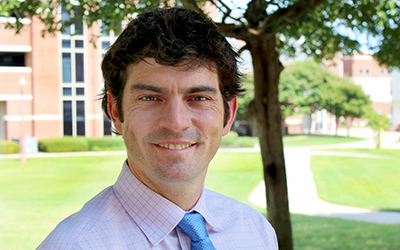Humanity’s “concepts of God” always swing between two extremes. At one extreme, there is the mythological view in which God (or the gods) is embroiled in the world drama, which, with its own laws of operation, thus constitutes a third level of reality above God and humanity; at the other extreme, God is seen dwelling in philosophical sublimity above the vicissitudes of the world, which prevent him from entering the dramatic action. On the basis of biblical revelation, we can say right at the outset that God has involved himself with the creation of the world, particularly in the creation of finite free beings, without thereby succumbing to some superordinate fate. Thus God of theodramatic action is neither “mutable” (as in the mythological view) nor “immutable” (in the terms of philosophy). (p. 9)
It is true that, right at the center of our existence in the world, there is the ugly, the grotesque, the demonic, the immoral and ultimately the sinful –all that makes it hard and often impossible for humanity to believe that the world has a total meaning . . . In pre-Christian times, the boundaries between “the shekinah, the hidden, consuming glory of the Absolute . . . and the personified face of what is ultimately meaningless can be very close, as we can see from the grotesque, imposing grimaces on the faces of Chinese or Aztec gods and demons, which suggest that the meaning at the heart of the world is a mysterium horrendum and adorandum. But after the event of Christ’s Cross, humanity is presented with a choice: hearing the cry of dereliction, we must “discern” either hidden love (shown in the Father’s surrender of the Son) or the meaningless void. (p. 27)
Inevitably, most of the great interpretations of the world had the ambition of bringing the raging world drama into a unity with the divine stillness. So it has been ever since the Bhagavadgita and Heraclitus, for whom war was the father of all things and the world a heap of refuse. Yet through all the contradictions, we detect the rhythm of the eternal Logos: in the Stoics, who taught the wise person to be passionless in the midst of the storm of life’s passions; via Dante and Milton, to the “Prologue in heaven” of Goethe’s Faust… — and to Hegel’s “phenomenology of Spirit”, with its vast dramatic canvas, which has to be identical with the totally enlightened repose of his “great logic”. But the Bhagavadgita remains stuck fast in contradictions, and what we have in Heraclitus is a proud resignation that is already preparing the way for the Stoics’ flight from drama. In Faust (as in the Divine Comedy) the dramatic contradiction is negotiated with the aid of the guiding thread of a self-refining longing for the Absolute or a self-purifying Eros, and in Hegel an ultimate dualism hovers between the struggle of existence and a knowledge that surveys the whole. But neither the simple affirmation of the contradiction nor the flight from it nor humanity’s overcoming of it by “striving and exerting itself” (Faust) can explain the mysterious, apocalyptic simultaneity of liturgy and drama. This applies also to the religions of earthly “holy wars” in the name of Yahweh or of Allah [and, mistakenly, the God of Jesus Christ!] : they bring about no reconciliation; they only destroy, creating an empty space where the transcendent God can put forth his power…
Quite different is the holy war conducted in the Book of Revelation by the Lamb, who is also the “Lion of Judah” and the “Logos of God”, from whose mouth issues the sharp sword with which he smites the nations and who ”treads the winepress of the wrath of God”. Here there is no hiatus between worship and service and above all no hiatus between the powerlessness of being slain and the power of conquest – the latter comes by virtue of the former. What we have seen from the background – namely, that the Beautiful never overwhelms those who resist it but, by its grace, makes prisoners of those who are freely convinced – holds true when this background is concentrated in the figure who steps forth from it: it is the power of self-giving love that speaks in the tones of implacable judgment…
So our Aesthetics has already provided us with something like a criterion for the present theodramatic theory. As the Aesthetics developed, grace [Huld] showed itself as eternal love’s self-giving unto the Cross; there its triumph appeared and its eternal vindication (in the Resurrection). All we need to do is take what is implicit in our aesthetics and make it explicit in dramatic theory
Whatever has emerged from the depths of nonbeing, to set itself up in existence or dig itself in, will in the end be leveled, consigned once more to nonbeing. And initially, as we have said, it does not matter which view of the Absolute is being put forward: the nihilistic or materialistic view or the Buddhist or even the Islamic view. For in all these conceptions the Absolute is motionless: in the presence of its stillness, all the noise of becoming passing away must fall silent… (pp. 34-5)
Also published on Medium.


Recent Comments
MegaMAGAloveUSA!
"Lord God Almighty, please let us Christians wake up with empathy, compassion and ..."
MegaMAGAloveUSA!
"Thank you. Trying to learn a way through this all. CHRISTIANS ..."
Deb
"Thank you for this important critique of JHY's theology of the cross lived ..."
ReaderV
"There is no doubt abortion is tragic . I don't believe anyone ever ..."
Sandra
"Wow!!! I love this guy! Peacemaking is so dear to my ..."